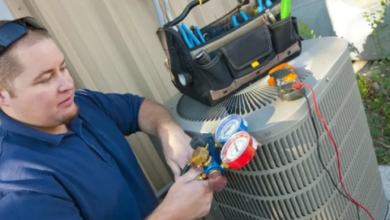Why Are Safety Measures Significant at Aquatic Facilities?

Aquatic facilities are places for no particular reason and unwinding. They offer a break from the everyday routine. However, they additionally present serious risks. Safety measures are crucial to ensure a protected environment. Proper safety conventions can prevent mishaps and save lives.
The Importance of Lifeguards
Lifeguards are the first line of protection. They are trained to deal with emergencies. Their presence dissuades risky way of behaving. Lifeguards can recognize inconvenience before it heightens. They give immediate help with instance of mishaps. Having thoroughly prepared lifeguards is essential.
Drowning Prevention
Drowning is a main source of death in aquatic facilities. It happens rapidly and quietly. Viable safety measures can prevent drowning. Oversight is vital. Guardians and gatekeepers ought to constantly watch their children. Pools ought to have clear perceivability. Lifeguards and safety equipment ought to be effectively accessible.
Read more: Monkeygg2 Proxy
Proper Signage
Signage plays a basic role in safety. Signs ought to demonstrate pool profundity and rules. They ought to caution of likely hazards. Clear signage forestalls mishaps. It guides swimmers on safe way of behaving. Signs ought to be noticeable and straightforward. Regular updates ensure they stay significant.
Regular Maintenance
Maintenance is crucial for safety. Regular really takes a look at keep the facility in top condition. Clean water prevents contaminations. All around kept up with equipment lessens the risk of injury. Dangerous surfaces ought to be quickly tended to. Routine maintenance ensures a protected environment for all.
Safety Equipment
Safety equipment is an unquestionable necessity. Life coats, rescue cylinders, and first aid units ought to be accessible. Equipment ought to be in great shape. It ought to be effectively accessible. Staff ought to know how to utilize it. Regular drills ensure readiness.
Water Quality Management
Water quality influences health and safety. Proper substance balance is fundamental. Regular testing prevents the growth of hurtful microscopic organisms. Clean water decreases the risk of contaminations. Swimmers ought to be taught on cleanliness practices. Showering before entering the pool is essential.
Training and Certification
Staff training is crucial. Workers ought to go through thorough training. Certification ensures they are qualified. Regular boosts keep their skills sharp. Training incorporates CPR and first aid. The American best water safety courses give comprehensive schooling. They plan staff for different emergencies.
Rules and Regulations
Rules are the underpinning of safety. They set clear assumptions for conduct. Upholding rules prevents mishaps. Rules ought to cover all parts of pool use. They ought to be conveyed plainly. Swimmers ought to understand the importance of following them.
Emergency Action Plan
An emergency action plan (EAP) is essential. It frames procedures for emergencies. Staff ought to be know about the EAP. Regular drills ensure everybody knows their role. The EAP ought to cover different scenarios. Speedy and coordinated reactions save lives.
Child Safety
Children are at higher risk in aquatic facilities. Additional safety measures are vital. Designated areas for children improve safety. Adult oversight is obligatory. Swimming examples can teach kids essential skills. The best water safety courses for children are compelling. They make learning fun and locking in.
Communication Systems
Powerful communication is imperative. Systems ought to take into account fast alarms. Lifeguards ought to approach communication gadgets. Dad systems can communicate significant messages. Clear communication prevents misunderstandings. It ensures swift reactions in emergencies.
Community Training
Teaching the community improves safety. Public mindfulness missions can be viable. They illuminate individuals about risks and insurances. Schools can remember water safety for their educational program. Community programs can offer swimming illustrations. Instruction encourages a culture of safety.
Facility Design
Design influences safety. Proper design limits risks. Shallow areas for children improve safety. Inclines ought to be continuous. Non-slip surfaces prevent falls. Fencing around the pool confines access. Great design thinks about all parts of safety.
Role of Technology
Technology can upgrade safety. Surveillance cameras give extra monitoring. Automated systems can recognize irregularities. Caution systems ready staff to likely risks. Technology complements human endeavors. It adds an additional layer of safety.
Final Word
Safety measures are imperative at aquatic facilities. They prevent mishaps and save lives. From lifeguards to proper signage, each perspective is significant. Regular maintenance and training are crucial. Successful communication and community training play a role. The best water safety courses get ready staff and swimmers the same. The American Lifeguard Association underlines the importance of safety. Implementing these measures establishes a protected and pleasant environment.




